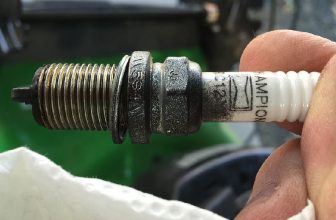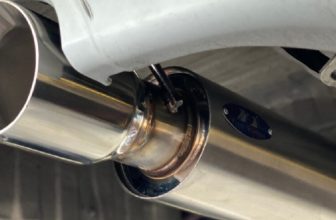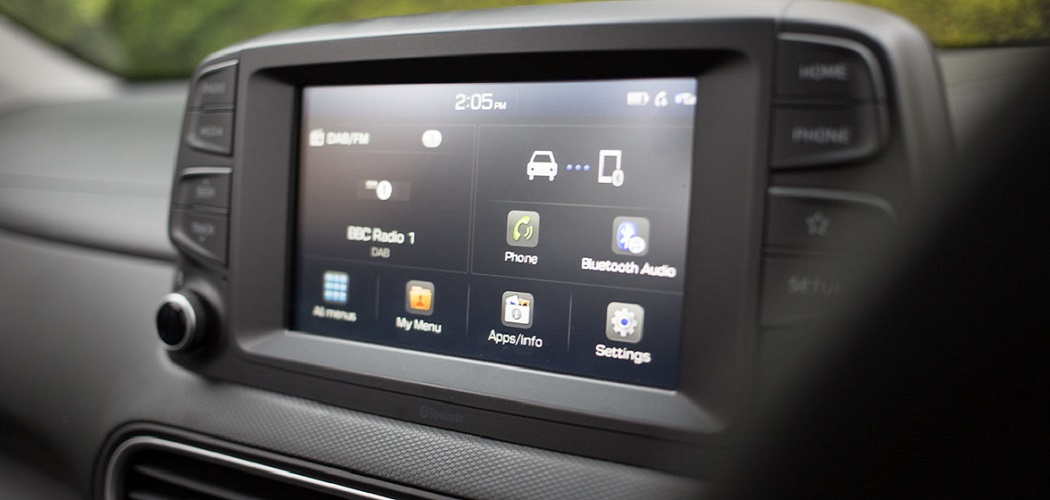How to Fix a Stuck Starter Solenoid
One of the most frustrating things about owning a car is when it won’t start. The starter solenoid is a common problem in older cars. It’s even more frustrating if you’re on your way to work and you can’t get going, or worse yet, if it happens when you’re in the middle of nowhere.

Luckily, there are a few things you can do to fix this problem yourself without having to take your vehicle to an auto shop. This blog post will show you how to fix a stuck starter solenoid in your car. A stuck starter solenoid can be difficult and expensive to replace, so you’ll want to have these tips ready before it happens!
What is a Starter Solenoid?
A starter solenoid is an electromechanical device that connects the battery to the starter motor in your car. When you turn the key, electricity flows through the solenoid, creating a magnetic field that then pulls a plunger that engages the starter gear with the flywheel and cranks the engine. You can think of it as a switch that allows high current to flow from the battery to the starter motor.
Some signs that your starter solenoid may be stuck include a clicking noise when you try to start your car or simply nothing happening at all when you turn the key. If this happens, there are a few steps you can take to fix the issue yourself.
Why Does the Starter Solenoid Get Stuck?
There are a few reasons why your starter solenoid may get stuck. One common issue is corrosion on the solenoid contacts, which can prevent it from receiving enough electricity to engage the starter motor. Another possible cause is worn-out connections or loose wiring. If these components become damaged or dirty, they can interfere with the flow of electricity and cause the solenoid to become stuck.
You may also experience a stuck solenoid if the battery is weak or dead. If there isn’t enough power in the battery, the solenoid won’t be able to engage the starter motor and your car won’t start.
Needed Materials:
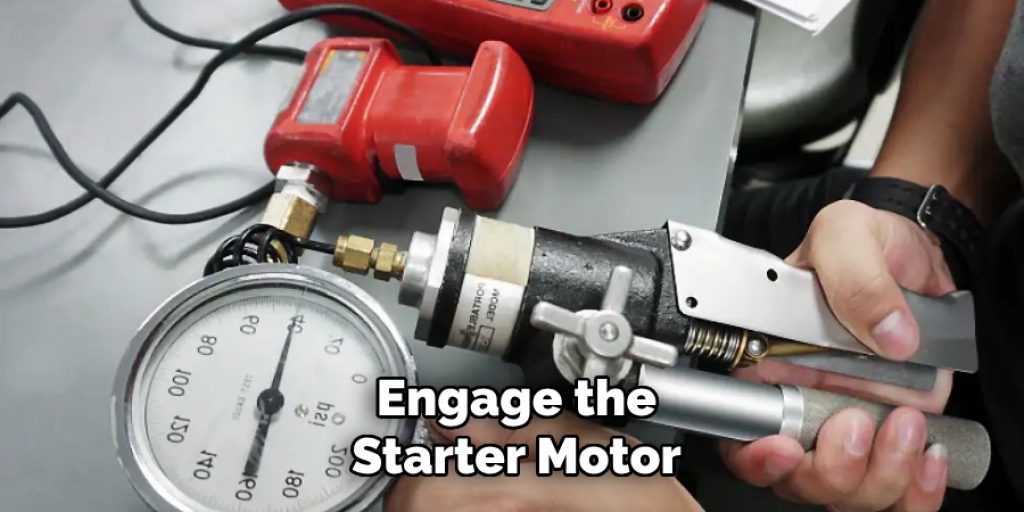
Wrench or Socket Set:
To access the starter solenoid, you’ll need to remove a few bolts. A wrench or socket set will make this task much easier.
Battery Charger:
If your battery is weak or dead, using a battery charger can help give it enough power to start the car and disengage the stuck starter solenoid.
Wire Brush:
If corrosion is causing the issue, using a wire brush to clean the solenoid contacts can help improve the flow of electricity.
Replacement Solenoid:
If none of these steps work, you may need to replace your starter solenoid. Make sure to get the correct replacement for your specific vehicle.
7 Common Reasons Starter Solenoid Get Stuck:
Typically, the starter solenoid gets stuck due to a buildup of rust and corrosion. Corrosion can also cause your starter motor itself to malfunction or even fail. Other issues could potentially cause this problem as well. Here is a list of some common reasons why you might have trouble with your car’s starter:
1. The most obvious reason your car’s starter might not work is that your battery is dead. However, before you blame the starter solenoid, make sure that the problem isn’t simply a dead battery! If you’re having trouble starting your vehicle, remove and replace the battery first to see if it fixes the problem.
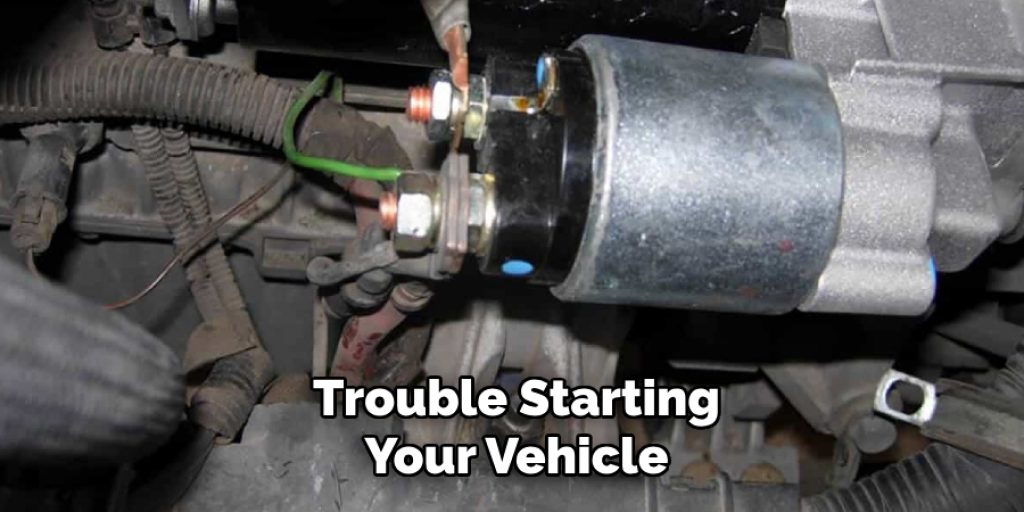
2. The starter solenoid is simply dirty. By cleaning the area around and underneath your battery, you’ll be able to prevent future problems with your starter solenoid. If you find yourself having to jump-start your vehicle frequently (for example, once a month or more often), then cleaning this area of your car will help avoid needing to do this again.
3. Loose ground wire connections to the battery. If your car’s starter solenoid is getting stuck, it could be because of a loose or corroded bolt that connects your vehicle’s grounding wires to the battery terminals. In addition, if you’ve recently replaced the battery, then check to make sure all of these bolts are tight.
4. If you’re having trouble with your car battery, then a loose connection in the car’s wiring harness may be the culprit behind this problem! While it can be time-consuming to check all of these connections, it will help save you money on auto repairs and ensure that your car is operating at maximum efficiency.
5. How about the starter motor itself? If you’re having problems with a car’s starter solenoid, then this might be your problem. Before you check anything else, ensure that everything is connected properly and check to see if there are any loose or corroded bolts in the area.
6. Sometimes, when we jump-start our vehicles, we accidentally connect the positive end of one battery to the negative terminal of another battery. For example, maybe you’re jump-starting a hot rod, and your friend accidentally hooks up the wrong cables to your car.
7. Here’s something you might not have thought about. If your starter solenoid is getting stuck, then it could be because your car’s engine is too hot! If you let your vehicle sit for an extended amount of time (especially in hotter climates), then a buildup of heat can cause this solenoid to overheat and malfunction.
Procedure: How to Fix a Stuck Starter Solenoid
If you’re having problems with the starter solenoid on your car, then you need to take some steps to fix this problem. This is where you’ll want to have these tips handy so that you can get your vehicle running again!
Step 1:

First, make sure that your battery (or the connections) is not causing this problem. If there is a loose connection or your battery has died, you can easily fix this problem with some jumper cables. If all is good with your battery, you’ll want to proceed to step two, showing you how to check the wiring harness and ensure that everything in this area is properly connected.
You should be able to see your starter solenoid underneath the hood of your car. Once you’ve located it, move on to step two. It should be located near the battery or within reach of the battery connections.
Step 2:
Next, check the bolts that connect the starter solenoid to your vehicle’s engine. This is where a wrench will be handy. You’ll want to make sure that all of these connections are tight and can’t come loose while you try to start your car (or else this could cause even more problems). If everything looks secure, move on to step three. But if you find a loose bolt or any corrosion, clean the area and tighten the bolts.
It’s also a good idea to check the connections between your battery and the starter solenoid. Make sure that everything is connected securely, and that there is no corrosion.
Step 3:
If all of these connections are good, you’ll want to check the wiring harness for anything that may be loose or corroded. How can you do this? You’ll need a screwdriver and then proceed to turn your car on (while it’s in the park). If there is any free play within these wires, this could cause your starter solenoid problems.
The wiring harness should be connected to your starter solenoid, and it’s a good idea to check all of these bolts for any corrosion or loose connections. Tighten everything back up if you find this. It’s also a good idea to coat these connections with an anti-corrosion gel, which will help prevent any future buildups.
Step 4:
If you are still having trouble with the starter solenoid on your vehicle, you can check a few other things. First, you’ll want to clean underneath your car and around the area of the battery. Second, if you see any corrosion or build-up of oil, then you’ll want to clean this off so that your wires can work properly!
You’ll also want to inspect the wires for any signs of damage. If you notice that they are worn or frayed, this could be causing your starter solenoid to get stuck. In this case, you will need to replace the wiring harness.
Step 5:
If you have a bad battery, then it needs to be replaced. All you’ll need is a multimeter (you can find one at most auto parts stores) and then attach the negative test lead to the negative terminal of your battery. Next, attach the positive test lead to the positive terminal of your battery. The multimeter should display a charge of 12.6 volts if your battery has an adequate charge level.
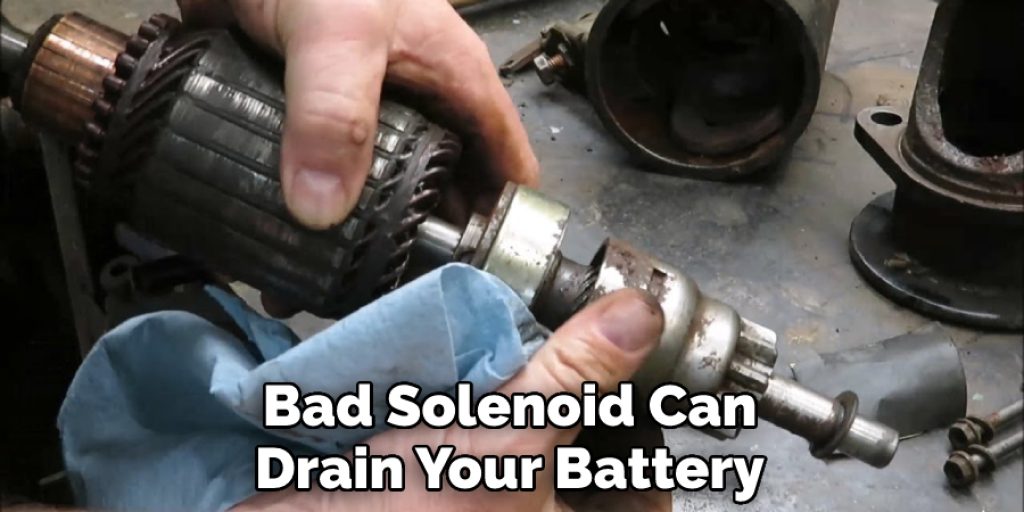
You can also take your battery to an auto parts store for a free checkup. They will do the test for you and let you know if it needs to be replaced. If so, then now is a good time to replace the battery. It’s also a good idea to check the connections between your battery and your vehicle. If any of these are loose or corroded, replace them or clean them up.
Step 6:
If this is not the problem, then you’ll want to check the starter solenoid itself! Well, to fix any problems with this part, you’ll need to find a shop that specializes in auto parts and inspect the starter solenoid. Maybe there is something wrong with the electrical contacts, or maybe there’s a problem with the flywheel on your car. Either way, you’ll need to take this part off and check it out! This is where you may want to consider hiring a professional mechanic who has experience in this area if you are not familiar with working on car engines.
You can also avoid this problem in the future by regularly maintaining your vehicle and having it checked for any potential issues. Keeping an eye on the wiring harness, battery, and starter solenoid will help ensure that you don’t run into any problems with a stuck starter solenoid in the future. And if you do, now you know how to fix it!
Step 7:
Before trying anything else, check the starter solenoid for any signs of damage. Is it rusted? Does it look corroded or dirty? If so, you’ll need to clean these areas with a fine-grit sandpaper or a wire brush. Be sure to use gloves and protect your eyes! After cleaning, you can spray these areas down again with some electrical contact cleaner.
The starter solenoid also has a plunger that can get stuck if there’s dirt or grime buildup. You can try tapping on this with a hammer to see if it loosens up, but be careful not to damage the starter solenoid while doin any repairs. If this doesn’t work, then it may be time to replace your starter solenoid.
Step 8:
If all else fails, the problem could be with your ignition switch itself, which controls the starter solenoid. However, this is rare and would only occur after extensive wear and tear on the vehicle. If you suspect this is the case, it’s best to consult a mechanic for further diagnosis and repair.
You can also prevent any issues with your ignition switch by regularly checking and replacing worn out parts, keeping the electrical system clean and free of debris, and using high-quality products for maintenance.
Step 9:
If you’ve tried all of these steps and your starter solenoid is still stuck, then it’s time to think about replacing it with a new one. Before purchasing a replacement, be sure to consult with a mechanic or do some research to ensure you are getting the right part for your specific vehicle, make and model.

It’s also essential to properly install the new starter solenoid and make sure all connections are tight and secure. This will help prevent any future issues and ensure smooth starting of your vehicle.
Step 10:
Once you have replaced the starter solenoid, be sure to reconnect all wires and bolts securely. Double-check all connections before attempting to start your car again. If everything is done correctly, your car should start without any issues. If not, it’s best to consult a professional mechanic for further assistance.
The starter solenoid may be a small and often overlooked component of your vehicle, but it plays a crucial role in the starting process. You can save time and money by regularly maintaining and checking this part, as well as properly troubleshooting any issues that may arise.
By following these 10 steps, you can fix a stuck starter solenoid and have your car running smoothly again in no time. Remember, it’s important to regularly maintain your vehicle and check for any signs of wear or malfunctioning parts so that you can prevent future problems from occurring. Taking care of your car can save you time and money in the long run.
Frequently Asked Questions:
Q: Can a Malfunctioning Starter Solenoid Cause Damage to My Car’s Engine?
A: Yes, a stuck or faulty starter solenoid can potentially cause damage to your car’s engine if not addressed promptly. It is recommended to fix any issues with the starter solenoid as soon as they arise to avoid potential long-term damage. It is also important to regularly check and maintain your vehicle’s starter solenoid to prevent any future problems.
Q: How Often Should I Check My Car’s Starter Solenoid?
A: It is recommended to check your car’s starter solenoid at least once a year. However, if you notice any issues with starting your vehicle or strange noises coming from the engine, it is best to check the starter solenoid immediately. Regular maintenance and inspections can help prevent any major problems with the starter solenoid.
Q: Can I Fix a Stuck Starter Solenoid Myself?
A: It is possible to fix a stuck starter solenoid yourself, but it can be a complex process and may require some mechanical knowledge. If you are not comfortable working on your car’s engine, it is best to take it to a certified mechanic for repairs. They will have the proper tools and knowledge to safely fix any issues with the starter solenoid. You can also refer to your vehicle’s manual for specific instructions on how to troubleshoot and fix issues with the starter solenoid.
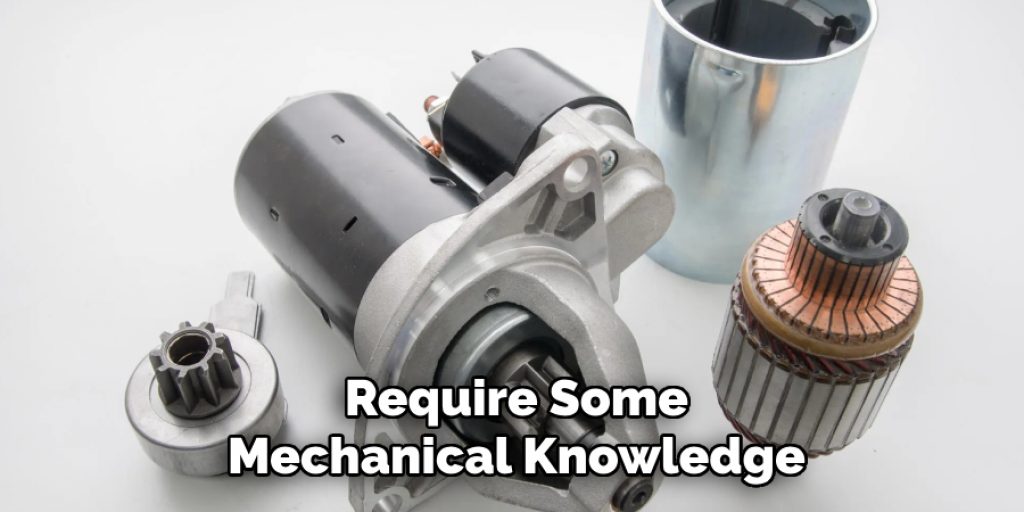
Q: Do I Need to Replace My Car’s Starter Solenoid if It is Stuck?
A: In some cases, a stuck starter solenoid can be fixed by cleaning or adjusting the wiring and connections. However, if the solenoid continues to get stuck despite these efforts, it may need to be replaced. It is best to consult a mechanic for an accurate diagnosis and to determine if a replacement is necessary.
Q: How Can I Prevent Issues with My Car’s Starter Solenoid?
A: Regular maintenance and inspections of your vehicle’s starter solenoid can help prevent any major issues. This includes ensuring all connections are tight, keeping the area clean of debris and corrosion, and addressing any problems as soon as they arise. Additionally, avoid jump-starting your car unless necessary, as it can potentially damage the starter solenoid. Overall, taking care of your vehicle and addressing any issues promptly can help prevent problems with the starter solenoid.
Conclusion:
Don’t let a broken starter solenoid stop you from enjoying your ride. This blog post has shown you how to fix a stuck starter solenoid and the most common cause of this problem so that you can get back on the road in no time.
You may read also: How to Unstick a Starter Motor


